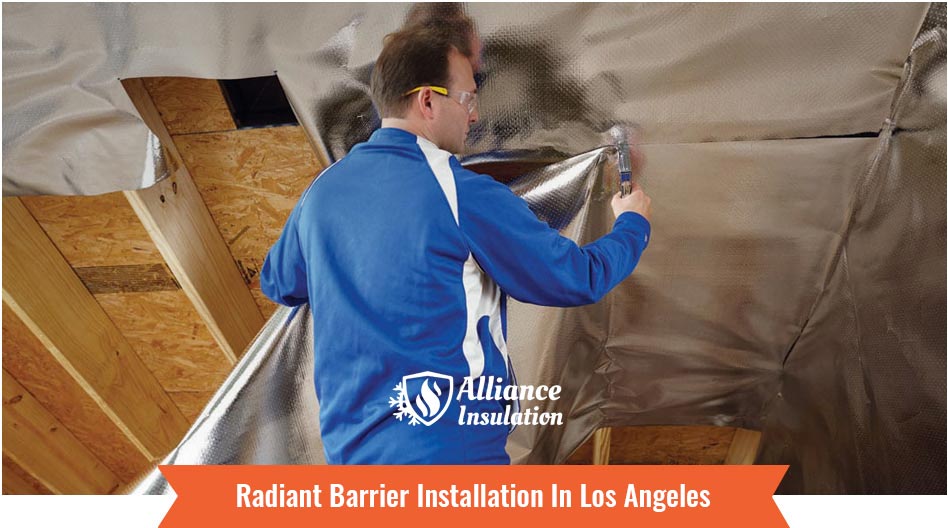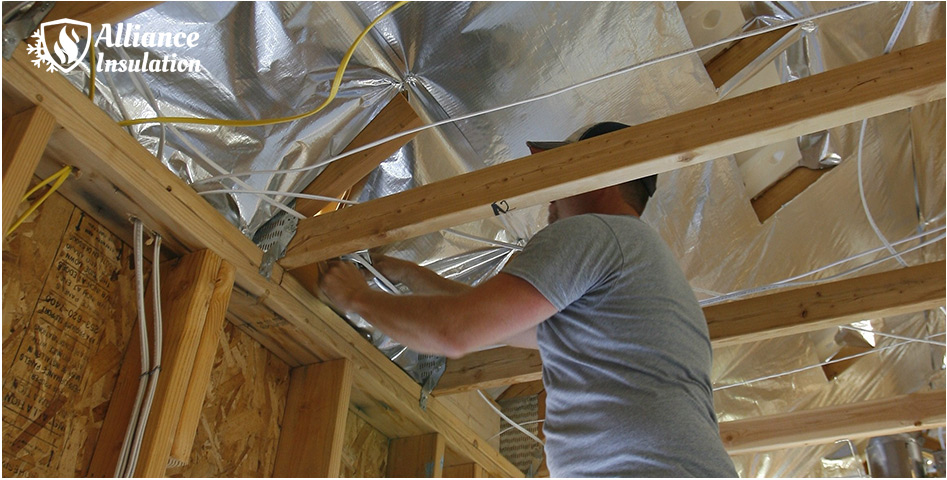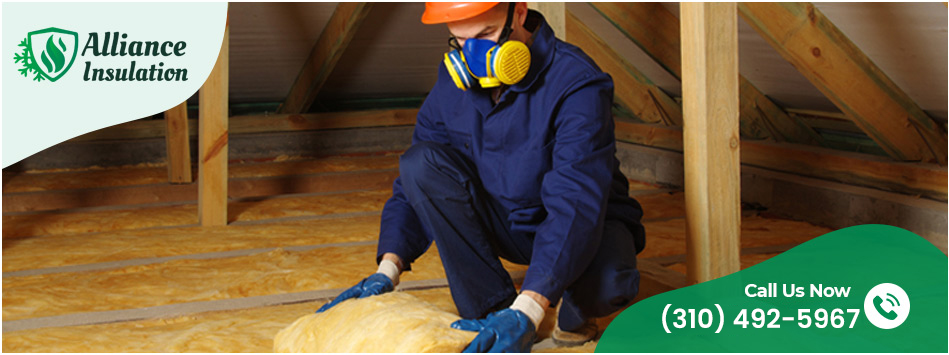
Radiant Barrier Installation in Los Angeles
Radiant barrier installation in Los Angeles offers numerous advantages for homeowners. This energy-efficient solution helps reduce heat transfer through roofs, keeping homes cooler in hot climates and reducing reliance on air conditioning.
As a professional contractor for Radiant Barrier Installation in Los Angeles, you get comprehensive services, starting with a thorough assessment to determine the best installation strategy. Get expert installation of radiant barrier materials, ensuring proper coverage and sealing. Additionally, you also get insulation upgrades, attic air sealing, and ventilation improvements to enhance overall energy efficiency. With our expertise, homeowners can enjoy lower energy bills, improved indoor comfort, and more environmentally friendly homes in Los Angeles’ sunny climate.
The Different Parts of Radiant Barrier
When you are planning for radiant barrier installation in Los Angeles, you should be aware of the different parts of the radiant barrier. Here are the main parts
Substrate
The substrate is the base material on which the radiant barrier is applied. It is usually a lightweight and flexible material like reinforced aluminum foil or a specialized radiant barrier film.
Reflective Surface
The reflective surface is the key element of a radiant barrier. It is typically made of a thin layer of aluminum that reflects radiant heat away from the barrier, preventing it from penetrating into the living space.
Reinforcement
Some radiant barriers feature reinforcement layers to enhance durability and strength. This can include materials such as woven or non-woven fabrics, scrim, or polyethylene mesh.
Insulating Layers
In certain cases, radiant barriers may include additional insulating layers. These layers help to further reduce heat transfer by providing a barrier to conductive and convective heat flow.
Adhesive or Fasteners
To secure the radiant barrier in place, adhesives or fasteners, such as staples or tape, may be used. These ensure proper installation and adherence to the substrate.

The Different Types of Radiant Barriers
As a professional in radiant barrier installation in Los Angeles, we help you to install a variety of radiant barriers. Here are a few of them
| Radiant Barrier Type | Description | Advantages |
|---|---|---|
| Foil-Faced Plywood | Consists of a layer of aluminum foil laminated to plywood or oriented strand board (OSB) |
|
| Reflective Insulation | Comprises multiple layers of aluminum foil and plastic or paper substrates |
|
| Radiant Barrier Paint | Specialized paint infused with reflective materials, such as aluminum flakes or ceramic beads. |
|
| Reflective Foil Insulation | Consists of a layer of aluminum foil laminated to foam or bubble wrap material |
|
| Radiant Barrier Foil | Thin sheets of aluminum foil or metalized film designed for installation in attics or on roofs |
|
Radiant Barrier Installation in Los Angeles – Factors to Consider
When choosing the right option for radiant barrier installation in Los Angeles, there are several factors to consider. Radiant barriers are materials designed to reduce heat transfer by reflecting radiant heat. Here are some important factors to keep in mind:
Material
Radiant barriers are typically made of aluminum foil or a similar reflective material. Consider the quality and durability of the material. Look for barriers with a high reflectivity rating, typically measured as a percentage
Emissivity
Emissivity is a measure of how well a material can emit radiant heat. Lower emissivity values indicate better performance. Look for radiant barriers with low emissivity ratings, preferably below 0.1.
Installation method
Consider the ease of installation and the specific requirements of the radiant barrier. Some barriers are designed for attic applications, while others can be used in walls or other areas. Choose a barrier that suits your specific needs and installation capabilities.
Perforation
Some radiant barriers have perforations to allow for vapor transmission. If you live in a humid climate or have specific moisture concerns, you may need a barrier with perforations to prevent moisture buildup.
Fire rating
Check the fire rating of the radiant barrier. It should comply with the relevant safety standards and regulations. Look for radiant barriers that are fire-resistant or have a high fire rating.
Certification
Look for radiant barriers that have been tested and certified by reputable organizations or independent laboratories. These certifications provide assurance of the barrier’s performance and quality
Cost-effectiveness
Consider the cost of the radiant barrier in relation to its performance and durability. Compare different options and choose the one that offers the best balance between effectiveness and cost.
Energy savings
Look for data or studies that demonstrate the energy-saving potential of the radiant barrier. Consider the long-term benefits in terms of reduced energy consumption and lower utility bills.
Environmental impact
Consider the environmental impact of the radiant barrier material. Look for barriers made from recycled materials or those that are recyclable.
Warranty
Check if the radiant barrier comes with a warranty. A warranty can provide peace of mind and protect you against any manufacturing defects or performance issues.
Faq’s
The installation time for a radiant barrier can vary depending on several factors, including the size of the area being covered, the complexity of the installation, and the experience of the installers. However, in general, radiant barrier installation can be completed relatively quickly compared to other home improvement projects.
The cost of radiant barrier installation can vary depending on several factors such as the size of the area to be covered, the type of radiant barrier material used, the complexity of the installation, and the region where you live. Additionally, the cost may also include labor charges if you hire professionals for the installation.
On average, the cost of radiant barrier installation ranges from $0.50 to $3.00 per square foot. This estimate typically includes the materials and installation labor. Keep in mind that this is a general range, and the actual cost can be higher or lower based on the factors mentioned earlier.
In Los Angeles, the requirements for permits can vary depending on the scope of the project and the local building codes. In many cases, installing a radiant barrier may not require a permit, as it is often considered a minor alteration or improvement that falls within the category of maintenance work


